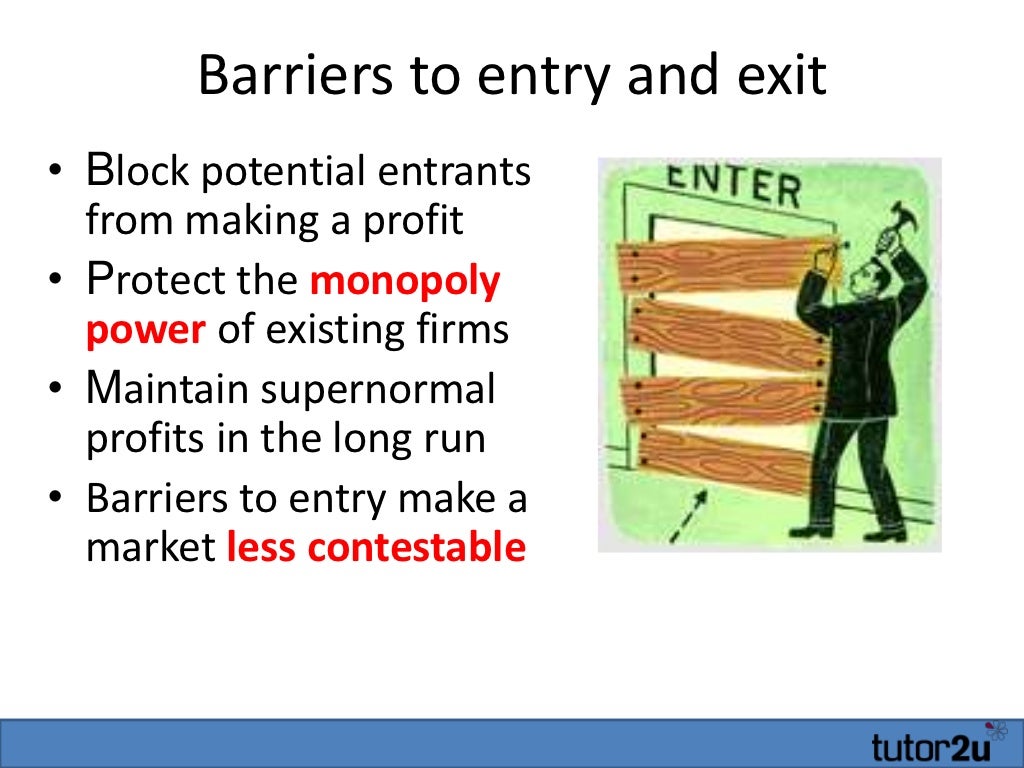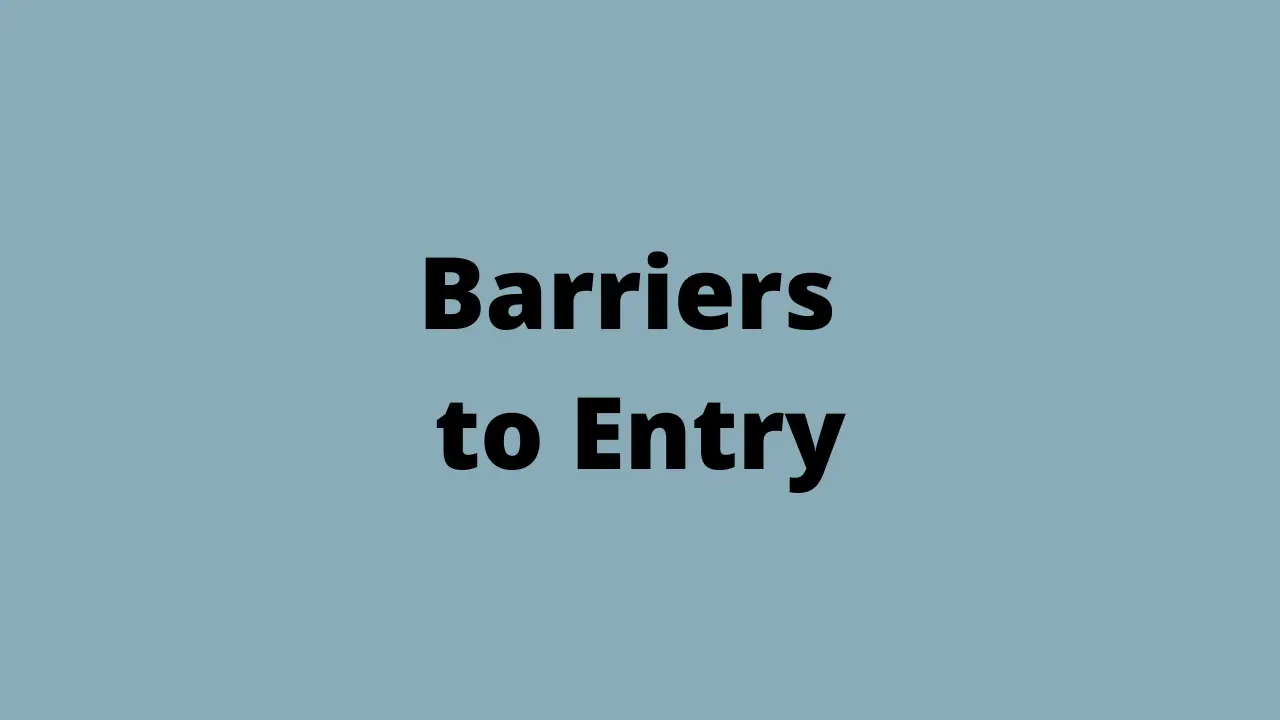

As a result, the average cost of launching a new pharmaceutical drug in 2012 was reportedly between $1.3 and $4 billion, with a ceiling of as much as $12 billion. Even after passing clinical trials, it can still take the FDA up to 10 years to approve a drug for consumption.ĭrug manufacturers with existing products on the market can take the fast track, replicating and patenting existing FDA-approved products to retain a monopoly.
#Barrier to entry trial
Even if a drug passes the review process, it must still pass clinical trials, which cost up to $100 million per trial and have a mere one-in-ten chance of obtaining FDA approval. Within this timeframe, the review process entails rounds of reviews, and just 7% and 34% of applications typically pass in the first and second rounds, respectively. The average wait time for obtaining FDA clearance for drug manufacture is a whopping 17 months. What are barriers to entry for an industry as powerful as Big Pharma? In the US, federal law mandates that in order to manufacture and market a pharmaceutical drug domestically, the manufacturer must first obtain authorization from the Federal Drug Administration (FDA). The pharmaceutical industry is a prime case study in high barriers to entry protecting an industry posing potentially wide-ranging risks to public health. Both of these can result in a market that is incredibly difficult for a newcomer to gain a customer base, especially if they do not have a large operating or marketing budget or do not have something that makes them talkably different from their competitors. An oligopoly is a market with a small number of related large firms that produce similar but slightly different products. A monopoly is a single firm that produces goods or services with no close substitute, such as a cable company that is the only service provider for a city. Monopolies and oligopolies are examples of high barriers to entry. pharmaceutical regulations) or market-based (e.g. access to medicinal ingredients), policy-based (e.g. (This is true whether the barrier is natural (e.g. High barriers to entry provide a particularly potent measure of protection for existing firms, since high barriers make it exceedingly difficult for competitors to enter the industry.

#Barrier to entry how to
In discussing how to overcome market entry barriers, it is also important to remember that, ostensibly, many market barriers are put in place to protect the industry’s integrity by preventing the entry of subpar products into the marketplace. Existing businesses also have the advantage of experience, which means they have a leg up on brand identity and customer loyalty within their target market. There are also industry-specific barriers to entering an industry. Common barriers to entry include the struggle to accumulate start-up capital, existing patents that limit innovation by would-be competitors and cost-prohibitive regulatory clearance requirements. competition from other firms in the same industry). regulations and licensure requirements) and market-based barriers (i.e. the cost of drilling a new oil well), policy-based barriers (e.g. They benefit existing firms due to the fact they protect their profits and revenues.įrom an economist’s standpoint, both low and high barriers to entry fall into three primary categories: Natural barriers (e.g. The barriers to entry definition, as defined by Investopedia, is the economic term describing the existence of high start-up costs or other obstacles that can prevent new competitors from easily entering an area of business or industry. It’s your mindset, and the biggest barriers to entry stem from your own fears.īy working diligently to refine your business vision and the passions that inspire you, you’ll discover a sense of certainty that will propel you past any barriers to entering an industry you may encounter. Although ideal conditions make entering an industry easier, it is not conditions or circumstances that ultimately create market entry barriers. complete funding, a fully-staffed team and perfect economic conditions) in order to compete. It’s easy to see how, in searching for answers to the question of what are barriers to entry, many business owners understandably come to believe that they must achieve perfection (i.e. Depending on the industry, emerging businesses may face obstacles that are relatively straightforward to overcome (low barriers to entry), those that are impossible to overcome without extensive resources (high barriers to entry) – or both. Many innovations never hit the market at all, due to what economists call “barriers to entry” – obstacles that prevent new competitors from entering an industry, thus cornering the market for existing businesses (think high start-up costs). Launching a business is a process fraught with hurdles.


 0 kommentar(er)
0 kommentar(er)
